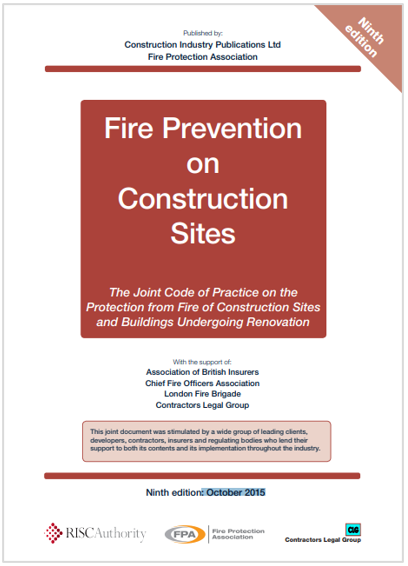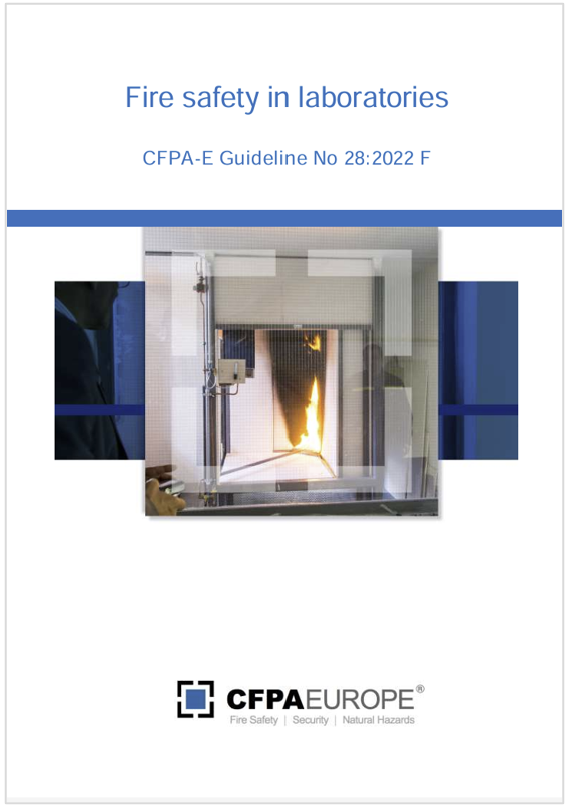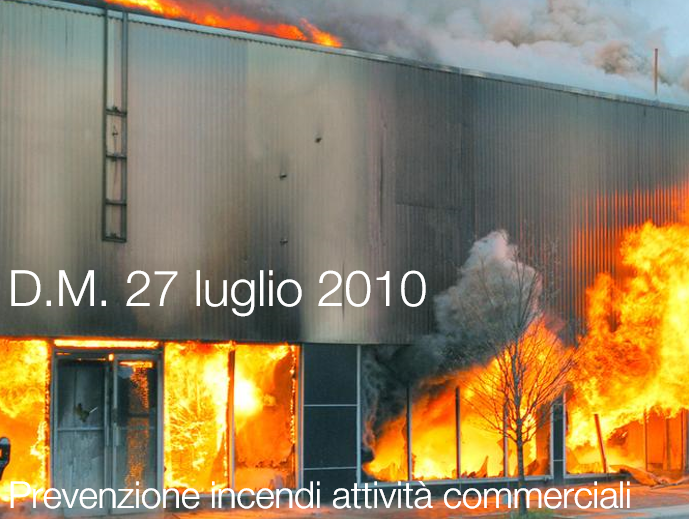Fire Prevention on Construction Sites

Fire Prevention on Construction Sites / 9th edition 2015
9th edition / October 2015
The Joint Code of Practice on the Protection from Fire of Construction Sites and Buildings Undergoing Renovation
The J...

ID 24468 | 23.08.2025 / In allegato
These recommendations are applicable to all laboratories. In addition to life safety, losses due to fire, explosion and ingress of water, intruders, and consequential losses are considered.
Health hazards and the reactions of chemicals, biohazards and radioactive materials are not considered in this document.
Also outside the scope of this document are clean rooms (areas with strictly controlled environmental conditions) which are situated within laboratory or manufacturing premises.
This publication provides recommendations to supplement national regulations for fire safety in laboratories of all sizes from small rooms to multi-million pound facilities. The guidance is directed to property protection and business continuity, as well as life safety issues.
...
Although laboratories differ widely in their construction and application, two general types of laboratory are encountered:
- Physical laboratories are used for testing the size, shape, weight, strength, corrosion resistance, fire related properties and other physical and mechanical qualities of materials.
- Chemical, pharmaceutical and bioscience laboratories where qualitative and quantitative analyses are undertaken to determine the composition of a material or product.
Generally, the hazards encountered in laboratories are low to moderate because of the relatively small quantities of materials being involved. However, some facilities may present serious fire hazards from:
- Excessive quantities of flammable or reactive chemicals;
- uncontrolled ignition sources and
- inadequate procedures or equipment for handling hazardous materials.
There is often a need for controlled conditions to achieve precise measurements and these can assist in reducing the hazards. As well as the life risk associated with fires and explosions in laboratories, many of these facilities will contain sophisticated equipment of high asset value and damage to these may have a significant impact on the continuing smooth running of the business operations of the organisation concerned or even those in neighbouring premises.
These factors should be addressed at the time of the outline fire risk assessment undertaken during the planning stage of the facility. As soon as the laboratory is operational a substantive fire risk assessment should be undertaken in accordance with national fire safety legislation. In order to maintain business continuity it is vital that in all laboratories an appropriate fire safety strategy is developed and adopted with staff receiving detailed instruction in the actions that they should take in an emergency. Incidents are thus measured not only in the direct material loss of the building and contents but in the loss of business earnings and productive time.
The replacement value of the building and its contents must be taken into account when considering measures necessary to address the fire risk assessment and not only the time necessary to construct or find new premises but the time necessary to duplicate research or production that has been carried out, in order to replace lost samples and essential data that will be needed before any new work can be undertaken.
A significant fire loss can seriously undermine international collaboration on projects and have an impact on marketing and hence the income to be derived from new products. A loss may also affect customers’ or potential future research partners’ perceptions of the organisation. The likelihood of an incident occurring must be minimised and if a fire does occur the quicker it is under control, the more likely it is that disruption to business will be minimised and normal operations will resume.
The general fire precautions should be the subject to a fire risk assessment in accordance with national legislation or practice. Where chemicals are present, an assessment may also need to be undertaken in accordance with relevant national legislation concerning the control and management of dangerous substances.
These assessments should be subject to periodic review and should always be reviewed at the planning stage of a new research project.
Other national legislation may also be relevant to the work being carried out in laboratories and appropriate action should be taken and recorded, including complying with such environmental legislation and controls as may be necessary.
This guideline is primarily intended for those responsible for safety in companies and organisations. It is also addressed to fire and rescue services, consultants, safety companies etc. so that, in course of their work, they may be able to help companies and organisations to increase their levels of fire safety.
...
Contents
1 Introduction
2 Scope
3 Definitions
4 Construction
5 Services and equipment
6 Space heating and air conditioning
7 Fume cupboards (including glove boxes)
8 Hot plates, ovens, furnaces and heating equipment
9 High-value equipment
10 Flammable liquids and gases
10.1 Piped services
10.2 Gas cylinders
10.3 Highly flammable and flammable liquids
10.4 Hazardous chemicals
11 Fire safety management
11.1 General provisions
11.2 Waste disposal
11.3 Welding and other hot-work processes
11.4 Overnight use
11.5 Smoking, eating and drinking
11.6 Water damage
12 Fire protection systems and training
13 Security
14 Contingency planning
Annex 1: Checklist Inspection checklist
European guidelines
CFPA Europe
G.1.4 Normazione volontaria
5. Norma riconosciuta a livello internazionale: norma adottata da un organismo riconosciuto a livello internazionale.
Nota
Sono organismi riconosciuti a livello internazionale tutti gli organismi di normazione extra europei citati nel presente documento e quelli comunque tradizionalmente riconosciuti nel settore antincendio. Ad esempio: NFPA, ANSI/UL, ASTM, API, FM Global, FPA, NIST, SFPE, TNO,
VDS, Energy Institute, IGEM, VTT, BRANZ, …
...
S.5.9 Riferimenti
1. Si indicano i seguenti riferimenti
...
d. European guideline CFPA-E No 1:2014 F “Fire protection management system”.
Collegati

9th edition / October 2015
The Joint Code of Practice on the Protection from Fire of Construction Sites and Buildings Undergoing Renovation
The J...
Modifiche ed integrazioni alla Circolare n° 31 MI.SA.(78)11 del 31 agosto 1978 recante “Norme di sicurezza per installazione di motori a combustione interna accoppiati...

ID 5389 | Update 17.09.2020
D.M. 27 luglio 2010
Approvazione della regola tecnica di prevenzione incendi per la progettazione, ...
Testata editoriale iscritta al n. 22/2024 del registro periodici della cancelleria del Tribunale di Perugia in data 19.11.2024